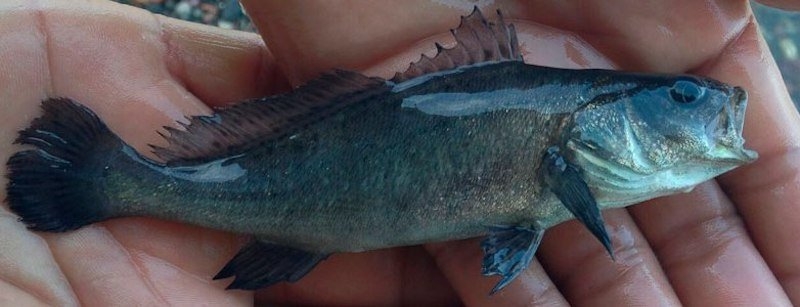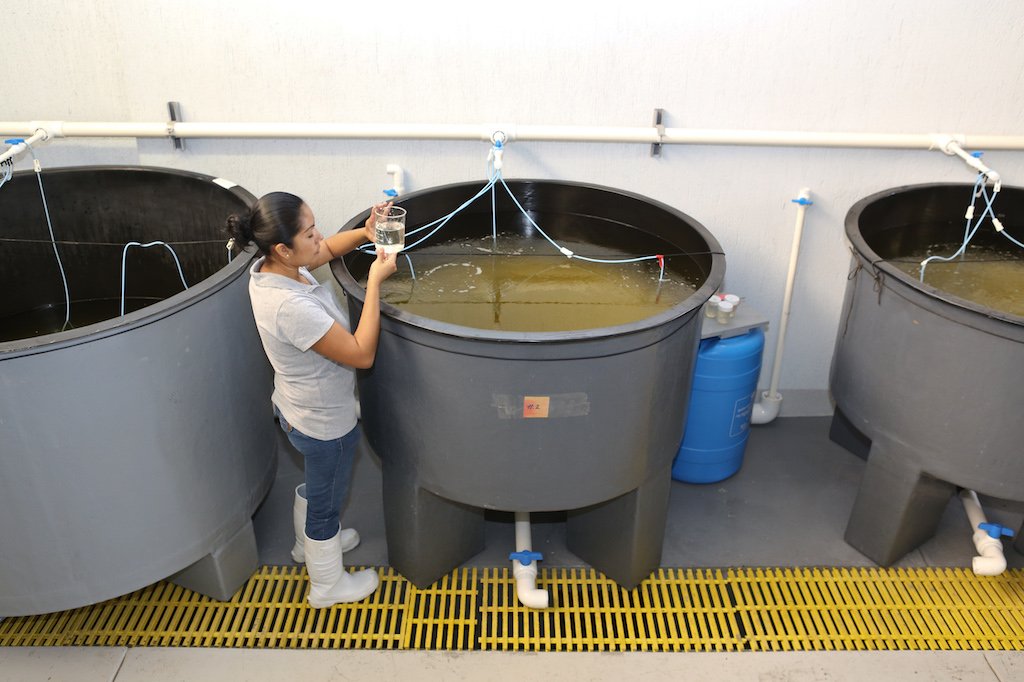
Features
Recirc
Saving the totoaba for fun and profit
Illegal fishing of one of Mexico’s best recognized fish, triggered in no small part by Chinese demand for maws (swim bladders), has sent the iconic totoaba to the edge of extinction in that region.
October 27, 2017 By Quentin Dodd
 Development of procedures for broodstock capture As the iconic Mexican sports fish teeters on the edge of extinction a handful of hatcheries work to preserve it for both recreational and commercial purposes
Development of procedures for broodstock capture As the iconic Mexican sports fish teeters on the edge of extinction a handful of hatcheries work to preserve it for both recreational and commercial purposesSo low are their numbers that the totoaba, which is native to the nation’s Sea of Cortez, is formally registered as critically endangered.
But there is still reason to hope that the species may not cross over into total extinction, thanks to a small handful of hatcheries working to both preserve it and move it into commercial production.
Helping in that precarious battle is Pablo Konietzko, general manager of Earth Ocean Farms (EOF) in La Paz, Mexico.
Konietzko notes that the fish is relatively easy to breed, as well as being quite a fast grower.
Known to live for up to 30 years in the wild, the totoaba can grow up to two metres in length with a weight of up to 135kgs.
Earth Ocean Farms has permits in place to legally sell totoaba in the Mexican marketplace and Konietzko says that the fish takes just a year to grow from 10-gram fry to be harvested at 2 to 4kgs each.
EOF notes that although it’s harvesting totoaba for the food market, it’s participating in what is being described as a “budding” restocking program in Mexico.
Totoaba in the hatchery
 |
| Tanks at Pablo’s hatchery. As the iconic Mexican sport fish teeters on the edge of extinction a handful of hatcheries work to preserve it for both recreational and commercial purposes |
The totoaba hatchery facilities at EOF consist of broodstock husbandry, spawning, and larval culture sections, culminating with the production of fingerlings for commercial stocking in submerged ocean netpens.
Konietzko said each of those early steps has specific systems and protocols which have to carried out with considerable care and attention to achieve success.
Because of their size, the totoaba broodstock are held in large circular tanks with well-designed water-recirc and treatment systems to supply superior water quality and prevent potential pathogens.
The broodstock are fed with natural and prepared feeds to supply the complex nutrient mix required for their health, maturation and egg production. The last is triggered by matching water temperature and hatchery light with the natural temperature and sunlight patterns the fish would have encountered in their yearly migrations if left in the wild.
When the fish spawn, the eggs float to the surface and are harvested with skimmers and concentrated into collectors.
Since totoaba tend to group-spawn at night, the collector devices can have millions of eggs in them when hatchery technicians arrive for work the next morning. Transferred into hatching tanks, the eggs usually take 24 hours to hatch at a temperature of 23 degrees Celsius.
Once that happens, the larvae are transferred to rearing tanks to be fed a diet of rotifers and artemia, which are cultured separately, then enriched, and fed to the larvae multiple times per day.
Konietzko said totoaba (totoaba macdonaldi) aquaculture owes a good deal to a ground-breaking program created some 20 years ago by the Mexican government at the Autonomous University of Baja California (UABC) in Ensenada, which developed procedures for broodstock capture, maturation, larval rearing and juvenile growout.
That was followed several years ago by a second program at the Center for Reproduction of Marine Species of the State of Sonora (CREMES) in Bahia Kino.
Print this page
Advertisement
- New hatchery will improve food security in northeast Haiti
- Michigan plans to augment lake sturgeon stocks





